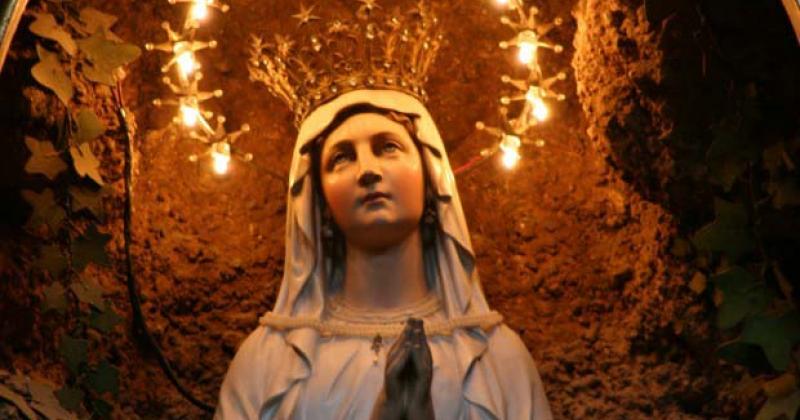So closely associated is the Blessed Virgin with the month of May that many might be led to believe that Mary has had a lock on that month since her son was a boy.
It’s a good fit, no question, but Mary and May didn’t begin to pair up in a big way until about the time Rossini was writing “The Barber of Seville”—and in roughly the same neighborhood.
Thank the Jesuits. It was the members of the Society of Jesus living and studying in Rome in the late 18th century who first popularized the dedication of May to the Blessed Virgin, taking their cue from customs dating back to the 13th century that used Marian devotions to “Christianize” secular feast days that fell during the month. Early in the next century the Jesuits’ devotion to Mary during May spread to other Jesuit colleges in Europe and eventually to the entire Western world.
Modern popes have shown a particular devotion to the Blessed Mother, and some have put it in writing. In his encyclical “Ad Caeli Reginam,” Pope Pius XII proclaimed the “queenship of Mary,” underscoring a practice in many countries of bestowing on Mary the title “Queen of the May.” Pope Paul VI, in his 1965 encyclical “Mense Maio,” suggested that May was an excellent time to incorporate special prayers for peace into traditional May devotions.
“[T]his is the month,” wrote the pope, “during which Christians, in their churches and their homes, offer the Virgin Mother more fervent and loving acts of homage and veneration; and it is the month in which a greater abundance of God’s merciful gifts comes down to us from our Mother’s throne…Mary is rightly to be regarded as the way by which we are led to Christ… For what other reason do we continually turn to Mary except to seek the Christ in her arms, to seek our Savior in her, through her, and with her?”
(In that encyclical, Paul sheds light on a much misunderstood aspect of Marian devotion: that she is an object of Catholic worship and adoration. She is honored and venerated as the Mother of God, but worship and adoration belong to the members of the Holy Trinity alone. When prayers are offered to Mary—as with all saints—they are pleas for intercession with God, a request for prayers on the petitioner’s behalf, not for direct action. Hence “holy Mary, Mother of God, pray for us sinners…”)
There is, however, lots of room for honoring and venerating when it comes to the Blessed Virgin, particularly during May. Many of the May devotional practices center on prayer, the most familiar of which is the rosary. It has been part of Church devotion since the 13th century and gained in popularity in the 19th century when Pope Leo XIII—known as the “rosary pope”—issued a record 12 encyclicals and file apostolic letters on the rosary. He emphasized the path to Christ through Mary. Subsequent popes also were enthusiastic supporters of the rosary, particularly Pope John Paul II.
Another less familiar Marian form of prayer is the Regina Coeli (Queen of Heaven). It is an antiphon that relates to the joy of the resurrection of Jesus and refers to the angel Gabriel’s invitation to Mary to become the Mother of God.
The Litany of the Blessed Virgin Mary, also known as the Litany of Loreto, is a popular prayer of petition, asking Mary to pray for us. It was prayed during the 16th century at the Marian shrine in Loreto, Italy, and invokes the Blessed Virgin by numerous titles given to her by the early Christians: mother of good counsel, queen of angels, morning star and mystical rose, for example. It is often prayed after the rosary, and has even been set to music by Palestrina, Charpentier, and Mozart.
Perhaps the most familiar May devotion to generations of Catholic school children is the practice of the May crowning. Not as common today as it once was, the ritual generally involves a procession in which a crown of flowers, often roses, is brought to a statue of the Blessed Virgin and placed on its head, and other flowers are left at the statue’s feet. Songs are usually sung, and a particular favorite over the years has been the Victorian “Bring Flowers of the Rarest” with its familiar chorus:
O Mary! We crown thee with blossoms today,
Queen of the Angels, Queen of the May.
